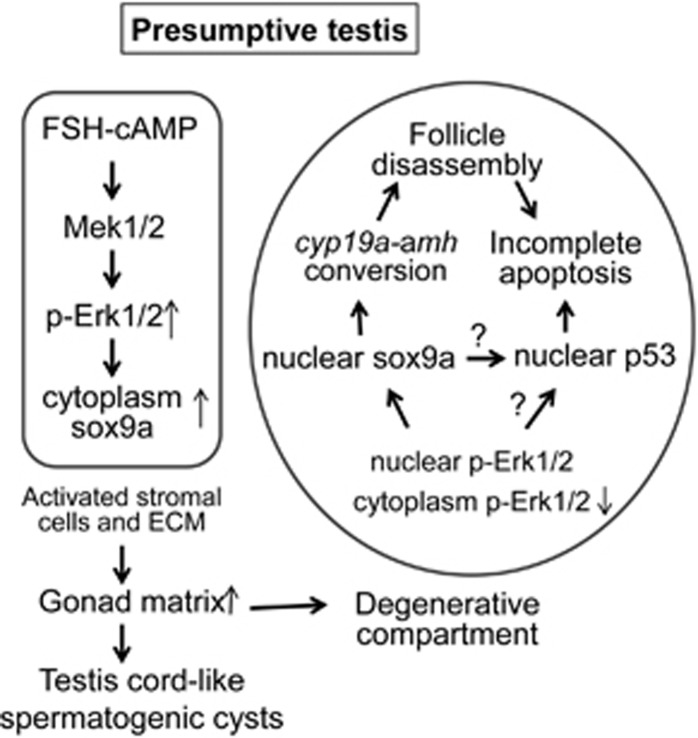Figure 6.
A proposed model that FSH-MAPK-sox9a/p53 signaling pathways regulate juvenile ovary–testis transition in zebrafish. In the stromal cells of the presumptive testis group, juvenile FSH upregulates sox9a expression and cytoplasmic distribution through phosphorylation of Mek1/2–Erk1/2 signaling. Activated stromal cells and increased ECM form gonad matrix that grows as testis cord-like spermatogenic cysts or becomes degenerative compartments that surround the ovarian follicles. Within the degenerative compartments, p-Erk1/2 and sox9a are reduced, particularly in cytoplasm whereas sox9a and p53 in nucleus are relatively increased. Misexpression and translocation of sox9a deregulates the expression of amh/cyp19a1a and induces the follicle disassembly. Meanwhile, nuclear p53 promotes degeneration of the disassociated follicle cells, leading to incomplete apoptosis. Finally, these incompletely apoptotic cells are either transformed to testis cord or die. It is uncertain how p53 is regulated by sox9a and p-Erk1/2 are interplayed in the transforming gonads

